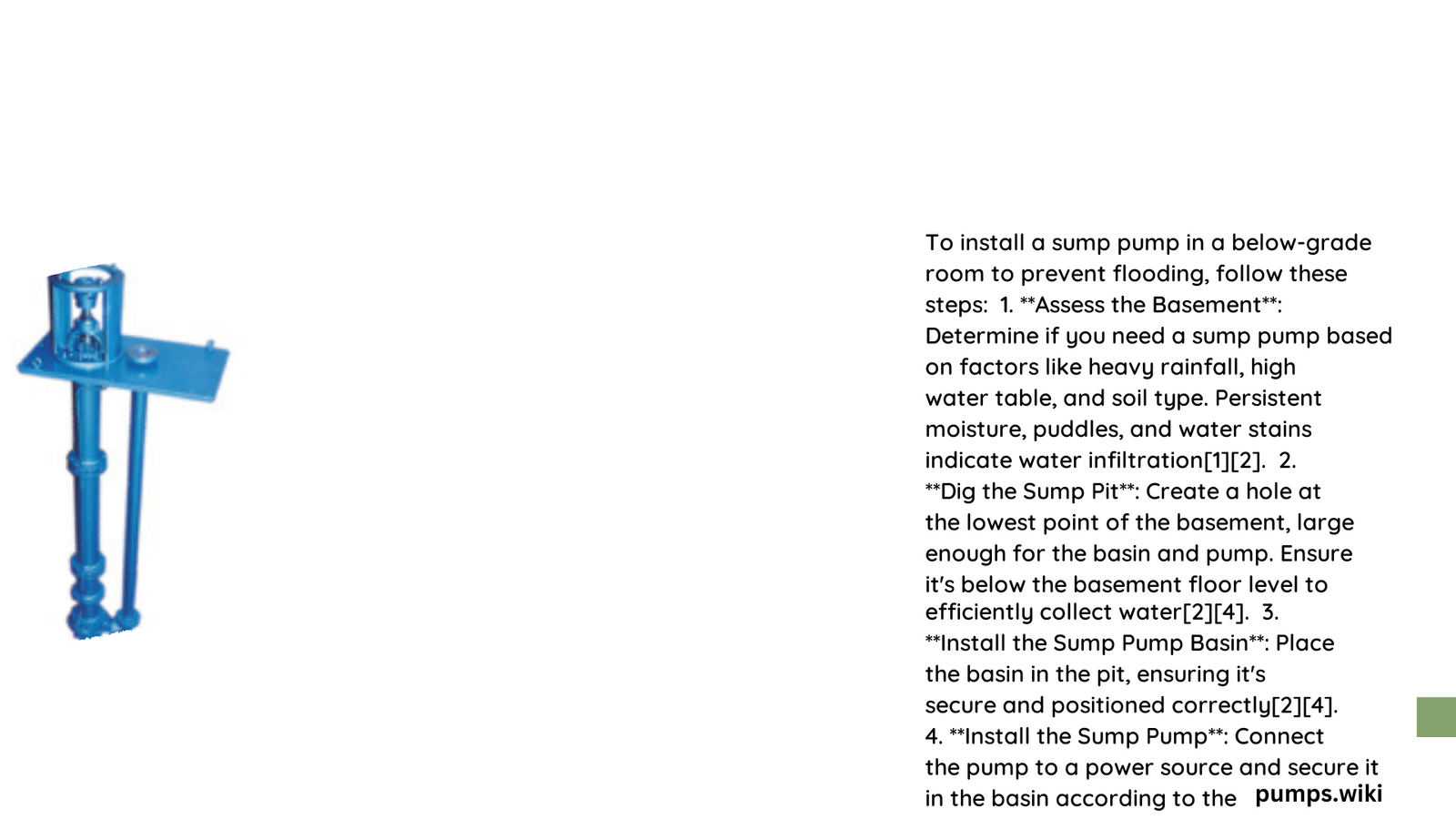Basement water intrusion can devastate home foundations, causing structural damage, mold growth, and significant financial loss. Homeowners facing below grade room flooding require strategic sump pump installation to effectively manage water infiltration, protect property investments, and create a dry, safe living environment. Understanding precise installation techniques, drainage systems, and preventative measures is crucial for long-term basement protection.
What Causes Below Grade Room Water Infiltration?
Water infiltration in below grade rooms occurs through multiple pathways:
- Ground Water Pressure: High water table levels push moisture through foundation walls
- Soil Composition: Clay-heavy soils retain more water, increasing hydrostatic pressure
- Drainage Slope: Improper grading around home foundations directs water toward basement
- Structural Cracks: Foundation fissures provide direct water entry points
How to Prepare for Sump Pump Installation?

Site Assessment and Planning
Before installing a sump pump, conduct a comprehensive basement evaluation:
- Measure Basement Dimensions
- Calculate total square footage
- Identify lowest point for sump pit
-
Assess water table levels
-
Select Appropriate Pump
- Submersible vs. Pedestal pumps
- Horsepower requirements
- Discharge capacity
| Pump Type | Pros | Cons | Best For |
|---|---|---|---|
| Submersible | Quieter, More Efficient | Higher Cost | Deep Pits, High Water Volume |
| Pedestal | Lower Cost, Easy Maintenance | Louder Operation | Shallow Pits, Lower Water Volume |
What Tools Will You Need?
Essential equipment for below grade room flooding sump pump installation:
- Heavy-duty jackhammer
- Concrete drill
- PVC pipe cutter
- Level
- Waterproof sealant
- Safety protective gear
- Gravel and cement
- Adjustable wrench
How to Create an Effective Drainage System?
French Drain Implementation
- Excavate perimeter trench (12-18 inches deep)
- Install perforated drainage pipe
- Cover with landscape fabric
- Add gravel for optimal water flow
- Connect drainage to sump pump discharge
What Maintenance Strategies Prevent Future Flooding?
Proactive Water Management
- Quarterly Pump Inspection
- Check float switch functionality
- Test electrical connections
- Clean debris from pit
-
Verify discharge pipe integrity
-
Exterior Waterproofing
- Apply waterproof membranes
- Improve landscape grading
- Seal foundation cracks
- Install gutter extensions
Cost Considerations for Sump Pump Installation
Average installation costs range between $1,000 to $4,000, depending on:
– Basement size
– Pump complexity
– Additional waterproofing requirements
– Local labor rates
Professional vs. DIY Installation
| Approach | Pros | Cons |
|---|---|---|
| Professional | Guaranteed Quality, Warranty | Higher Cost |
| DIY | Cost Savings | Technical Complexity |
Key Takeaways
- Proper sump pump installation prevents catastrophic water damage
- Regular maintenance extends system lifespan
- Comprehensive drainage solutions protect property value
- Professional assessment recommended for complex scenarios
Reference:
– Sump Pumps Direct Installation Guide
– EPA Basement Waterproofing Guidelines
– National Association of Home Builders Drainage Recommendations
